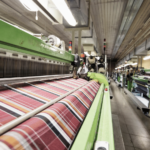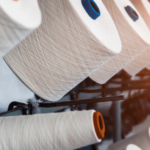Fabric manufacturing plays a significant role in the fashion industry, but it is often associated with negative environmental impacts. However, with the increasing awareness of sustainability, many companies are adopting eco-friendly practices to minimize their carbon footprint. In this article, we will delve into the world of sustainable fabric manufacturing and explore the innovative techniques and materials used to create environmentally responsible textiles.
Introduction to Sustainable Fabric Manufacturing
In recent years, the fashion industry has faced criticism for its environmental impact, particularly in fabric manufacturing. However, sustainable fabric manufacturing aims to minimize these negative effects by adopting eco-friendly practices throughout the production process. This approach focuses on reducing energy consumption, conserving water, managing waste effectively, and using sustainable materials.
Sustainable Materials in Fabric Production
Sustainable fabric manufacturing starts with the use of environmentally friendly materials. Organic cotton, hemp, linen, and bamboo are examples of natural fibers that require less water and fewer chemicals compared to conventional cotton. Additionally, recycled polyester and regenerated fibers from post-consumer waste, such as plastic bottles or fishing nets, are gaining popularity in the industry.
Energy Efficiency in Fabric Manufacturing
Energy efficiency is a crucial aspect of sustainable fabric manufacturing. Companies are investing in advanced machinery and technologies to reduce energy consumption during the production process. Switching to renewable energy sources, such as solar or wind power, further reduces the carbon footprint of fabric manufacturing.
Water Conservation in the Textile Industry
Water scarcity is a global concern, and the textile industry is a significant consumer of water. Sustainable fabric manufacturing focuses on minimizing water usage through innovative techniques like closed-loop systems, which recycle and reuse water throughout the manufacturing process. Additionally, waterless dyeing methods and low-water fabric finishing processes help conserve this precious resource.
Waste Management and Recycling
Proper waste management is essential in sustainable fabric manufacturing. Companies are implementing strategies to reduce textile waste and recycle materials. This includes repurposing production scraps, upcycling discarded garments, and transforming textile waste into new fibers. By embracing the circular economy model, the industry aims to minimize landfill waste and extend the life cycle of textiles.
The Role of Technology in Sustainable Fabric Manufacturing
Technological advancements are driving sustainability in fabric manufacturing. Innovations such as 3D printing, digital prototyping, and computer-aided design help reduce material waste and improve production efficiency. Moreover, smart technologies are being utilized to monitor energy consumption and optimize production processes for greater sustainability.
Certification and Standards for Sustainable Textiles
Certifications and standards play a vital role in ensuring the authenticity and credibility of sustainable fabrics. Organizations like the Global Organic Textile Standard (GOTS) and the Bluesign system provide certifications to textiles that meet strict environmental and social criteria. These certifications help consumers make informed choices and support brands committed to sustainable practices.
Collaborations and Partnerships for a Greener Future
Collaboration among different stakeholders is essential for driving sustainable change in fabric manufacturing. Brands, manufacturers, NGOs, and governments are joining forces to develop innovative solutions, share best practices, and promote sustainable initiatives. By working together, the industry can accelerate the adoption of eco-friendly practices on a larger scale.
The Economic Benefits of Sustainable Fabric Manufacturing
Contrary to popular belief, sustainable fabric manufacturing can bring economic benefits to companies. Energy-efficient processes can lead to cost savings, and eco-friendly practices can attract environmentally conscious consumers. Additionally, as sustainability becomes a key factor in consumer purchasing decisions, brands that prioritize sustainability are more likely to gain a competitive edge in the market.
Consumer Education and Responsible Fashion Choices
To create a more sustainable fashion industry, consumer education is crucial. By raising awareness about the environmental impact of fabric manufacturing and promoting responsible fashion choices, individuals can make a significant difference. Choosing garments made from sustainable fabrics and supporting brands with transparent supply chains can contribute to a greener and more ethical fashion industry.
Case Studies: Leading Brands in Sustainable Fabric Manufacturing
Several leading brands are spearheading the sustainable fabric manufacturing movement. Companies like Patagonia, Eileen Fisher, and Stella McCartney have integrated eco-friendly practices into their supply chains and have become pioneers in sustainable fashion. These case studies highlight the successful implementation of sustainable fabric manufacturing and inspire other brands to follow suit.
Challenges and Opportunities for the Industry
While progress has been made, the fabric manufacturing industry still faces challenges on the path to sustainability. Scaling up sustainable practices, addressing supply chain complexities, and ensuring affordability for both brands and consumers are some of the obstacles that need to be overcome. However, these challenges also present opportunities for innovation and collaboration.
The Future of Sustainable Style
The future of sustainable style looks promising. As consumer demand for eco-friendly products continues to rise, the fabric manufacturing industry will be driven to adopt more sustainable practices. Continued research and development in materials, technologies, and supply chain transparency will contribute to a greener, more ethical, and stylish fashion industry.
Sustainable fabric manufacturing is revolutionizing the fashion industry, paving the way for a greener and more responsible future. By adopting eco-friendly practices, using sustainable materials, and prioritizing energy efficiency and waste management, companies can reduce their environmental impact while still delivering high-quality textiles. As consumers, we have the power to support this movement by making conscious fashion choices and encouraging brands to embrace sustainability.





